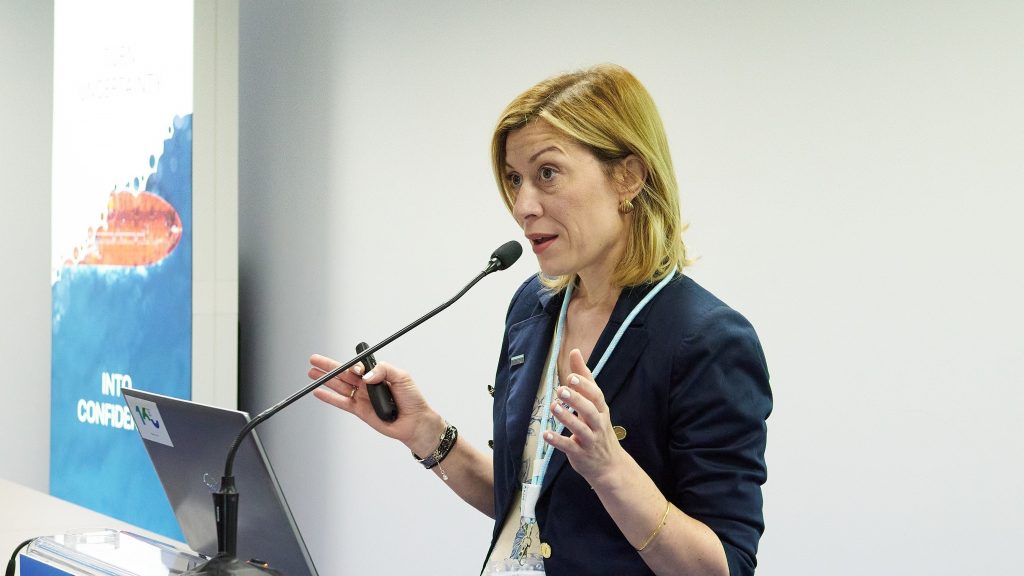Onboard carbon capture (OCC) is attracting interest within the shipping industry, providing shipowners with the opportunity to continue operating on conventional fuels while reducing emissions. However, according to DNV’s latest whitepaper “The potential of onboard carbon capture in shipping”, its success depends on collaboration between regulators, policy makers, industry stakeholders, class, and suppliers.
With decarbonization targets rapidly approaching, demand for cost-efficient solutions for emission reduction is increasing. DNV’s latest whitepaper explores OCC as a decarbonization solution for shipping by looking at its technical, economic, operational, and regulatory challenges, as well as its integration into the carbon capture, utilization, and storage (CCUS) value chain.
CCUS is the process of capturing CO2 and recycling it for future use or permanently storing it in deep underground geological formations. The maritime industry is exploring its application onboard ships, which will require an onboard system to capture, process and store the CO2, and a network of offloading which is integrated into wider CCUS infrastructure.
Chara Georgopoulou, Head of Maritime R&D and Advisory Greece, said: “OCC is expected to be part of a range of future options which will help shipping achieve its decarbonization goals. However, further collaboration and testing is required to verify its performance. The commercial attractiveness of OCC will depend on the terms under which regulations can credit the removal of carbon emissions, and how smoothly it can be integrated into the growing CCUS value chain.”
For OCC to be relevant for wider application it must be economically viable and competitive with other decarbonization alternatives. If successfully deployed, OCC can become a key way for shipowners to comply with decarbonization regulations, while also helping to reduce the demand for alternative fuels.
The EU ETS is the only regulatory framework currently providing commercial incentives for OCC. To encourage shipowners to adopt the technology, future environmental and greenhouse gas (GHG) emissions regulations must also provide credit for captured CO2.
“If we are to achieve IMO decarbonization targets, we must leave no stone unturned in continuing to investigate OCC and other potential technologies that can accelerate shipping’s decarbonization journey,” Georgopoulou said.
Source: DNV.
Tags: CCUS, CO2, DNV, OCC



Recent Posts
Report Highlights Pathway for Electrifying Nigeria’s Container Trade Sector
South Korean Company YPP Plans to Invest up to $3.1 Billion in Green Hydrogen Production in Kazakhstan
WattEV Expands Electric Truck Charging Network with Three New Depots in California
Anemoi Develops New Method to Accurately Measure Wind-Assisted Propulsion Benefits
Navigator Holdings and Amon Maritime Form Joint Venture for Ammonia-Fuelled Carrier Fleet
Hygenco Commissions Maharashtra’s First Green Hydrogen and Oxygen Facility to Power STL’s Net Zero Goals
India Invites Second Round of R&D Proposals Under ₹4 Billion Green Hydrogen Mission
BMTC Adds 148 Tata Electric Buses to Bengaluru Fleet, Strengthens Green Mobility Drive